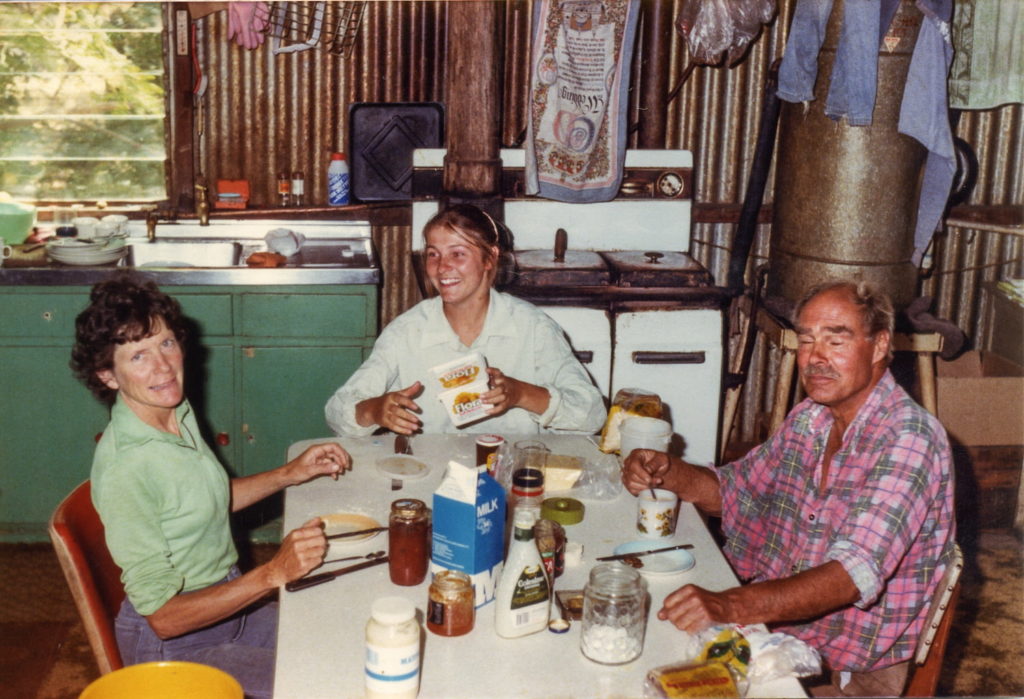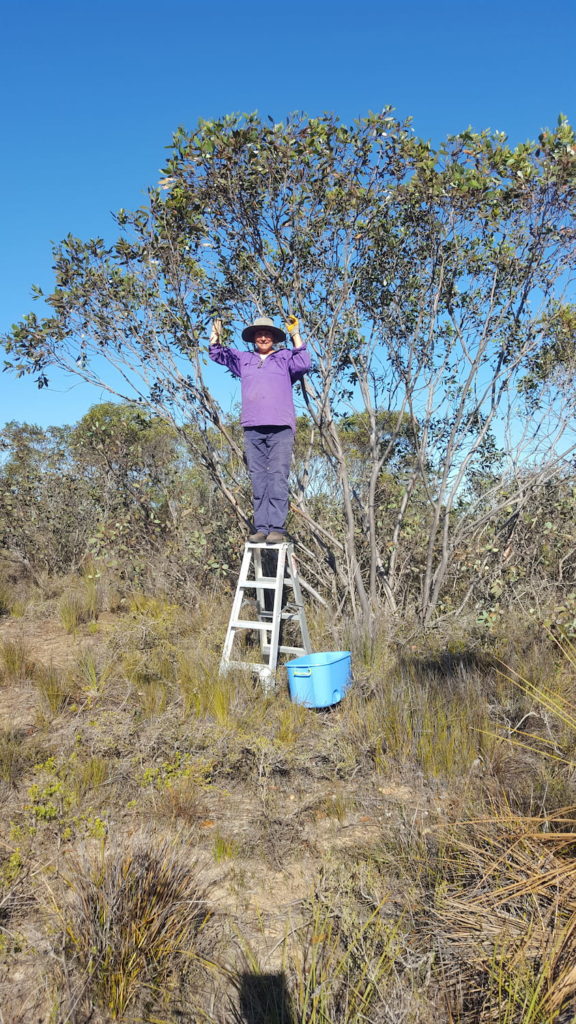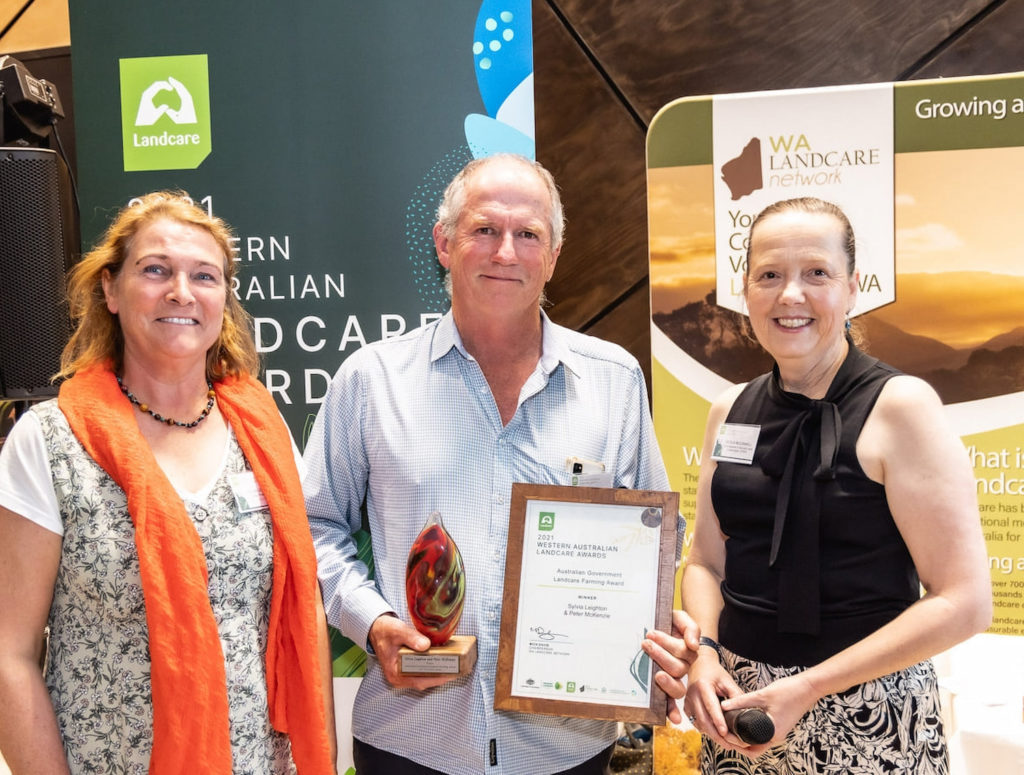Landcare family has passion for sustainable farming
February 2022
Sylvia Leighton grew up on ‘Wilyun Pools Farm’ – near Wellstead east of Albany – during a time when her family were clearing the bush to develop a sheep farm. In 2013, after her parents retired, Sylvia returned to the farm with her partner Peter McKenzie and their children. Sylvia came back with a wealth of knowledge and experience in biology, ecology, community landcare and soil science, along with a passion for farming in a more ecologically sensitive way. Peter, also with a farming background, brought the same enthusiasms plus years of experience in plantation forestry.
In 2021, Sylvia and Peter received an Australian Government Landcare Farming Award for their inspiring work on Wilyun Pools Farm. Sylvia shares their story here.
“In 1965, when I was brought here as an eight-month-old baby, the surrounding landscape was all native bushland. Our whole family became the workforce. I have two brothers and two sisters, and like kids all over the region, we were a major part of the workforce that cleared the land for agriculture. We were all involved in the bush clearing, the burning, the picking up of the stumps, raking, fencing and the sowing of pastures. Right through to my teenage years we were still clearing the native bushland. Maybe that experience sunk deeply into my subconscious, I’m not quite sure, but I’ve really spent the rest of my adult life, from when I was about 20 years old, working in environmental conservation,” Sylvia says.
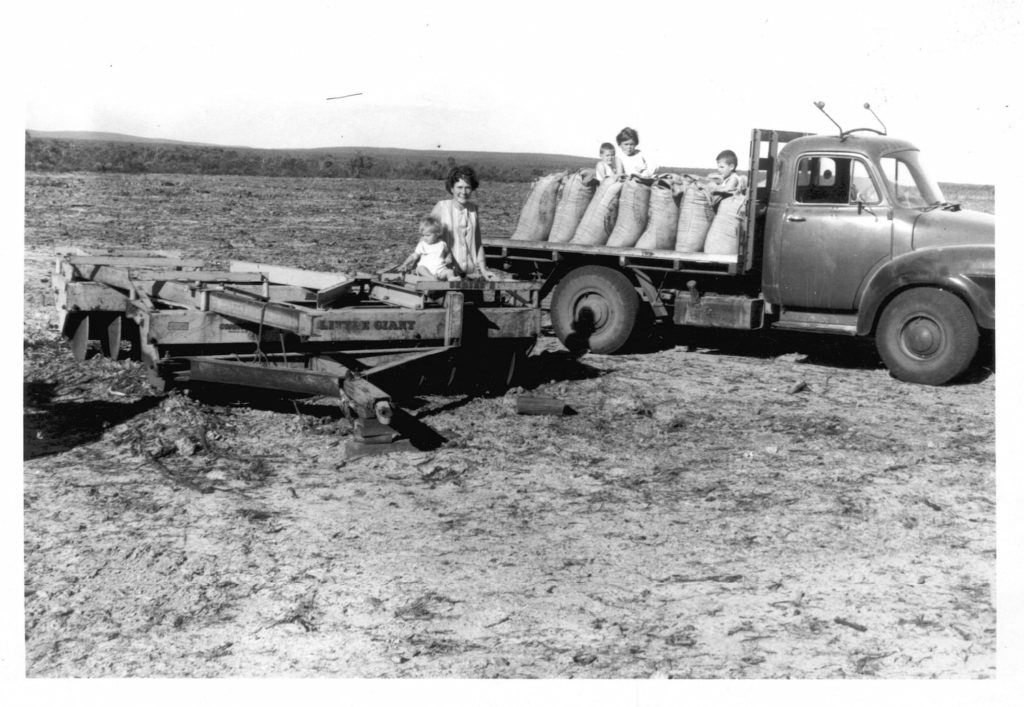
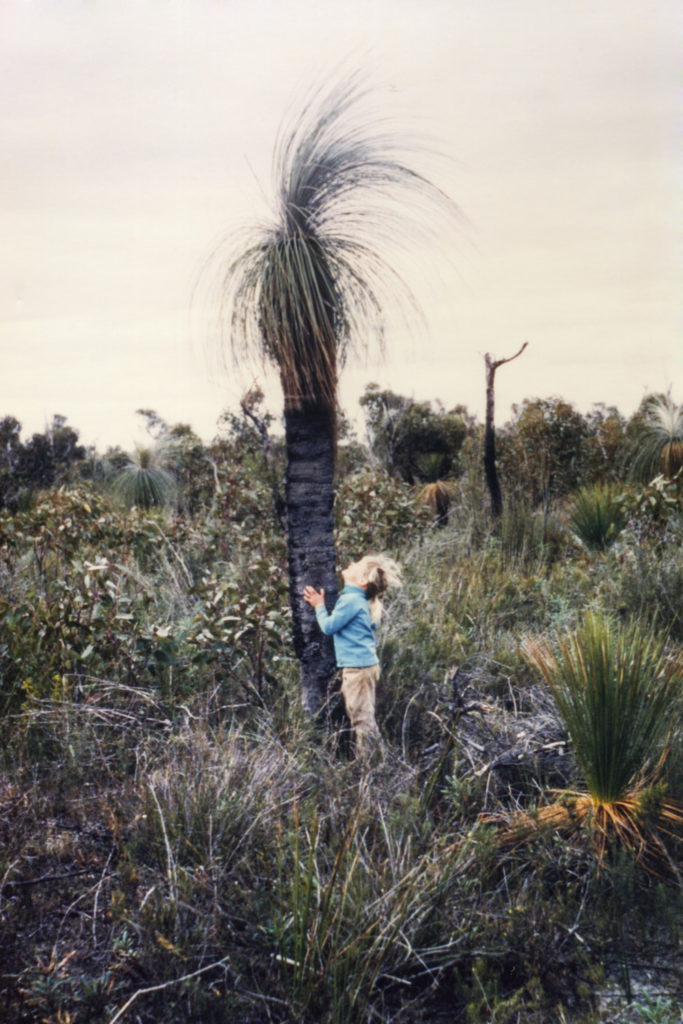
“So when the decision came to return to this farm with my partner Peter, it felt like it was very much the right thing to do. I needed to come back to the piece of land where, as a child, I was part of its destruction. We took away a lot of its biodiversity—I can’t imagine how many individual plants and animals we killed. We’re talking millions and millions on this 3000 acre (1240 ha) block alone.
“It feels very rewarding deep, deep down inside, to return to the land that I was on as a child and try to build it back up in health. I have come back in my fifties and I’ve brought some of the landscape monitoring, some of the science, which wasn’t here when I was a kid. We’re now building our knowledge about how this landscape functions. We’re never going to really understand it’s complexities, but we can make a contribution by investigating what kind of soils we have, finding out what the hydrology is doing, and adopting farming practices which are okay in this fragile landscape.”

Despite the need to maximise the farm’s development, Sylvia’s parents saw the importance of the local bushland and kept some of the original habitats. Sylvia and Peter are building on this legacy.
“The bushland down the back of the farm, with Wilyun Creek running through it, has been set aside as the core of the farm. As a non-Indigenous person, I’m saying this is the most sacred place on the property. We try to operate the whole farm to maintain the very good health of that waterway and the core biodiversity zone, and we hope that future care-takers of this land will also consider that this is really one of the most precious parts of the farm,” Sylvia says.
“There were other remnants of bushland on the farm and some of these were still in quite good health. For most of these areas we have established a 20-metre perimeter planting of local native plants, which protects the biodiverse core of the original vegetation at the site. At this stage we know we cannot replant the bush back to what it once was. We just don’t have the technical skills to propagate many of the native species, and the soil structure qualities have been changed by 50 years of agriculture. So those bits of remnant vegetation dotted around the farm are very precious—in my lifetime I don’t want to degrade any bushland ever again.
“In our revegetation we’re putting in about 30 plant species that provide structure and ecological function. We just hope that over 50 to 100 years, other local plant species will slowly move into these revegetated areas, but they may never ever go back to what they once were.”
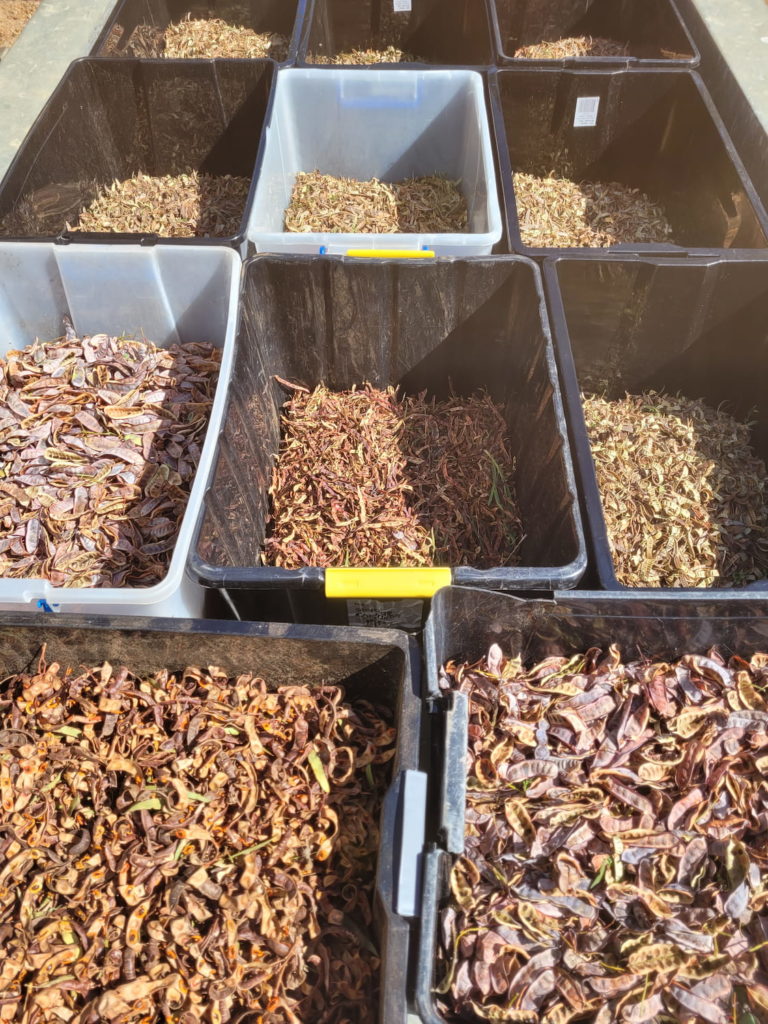
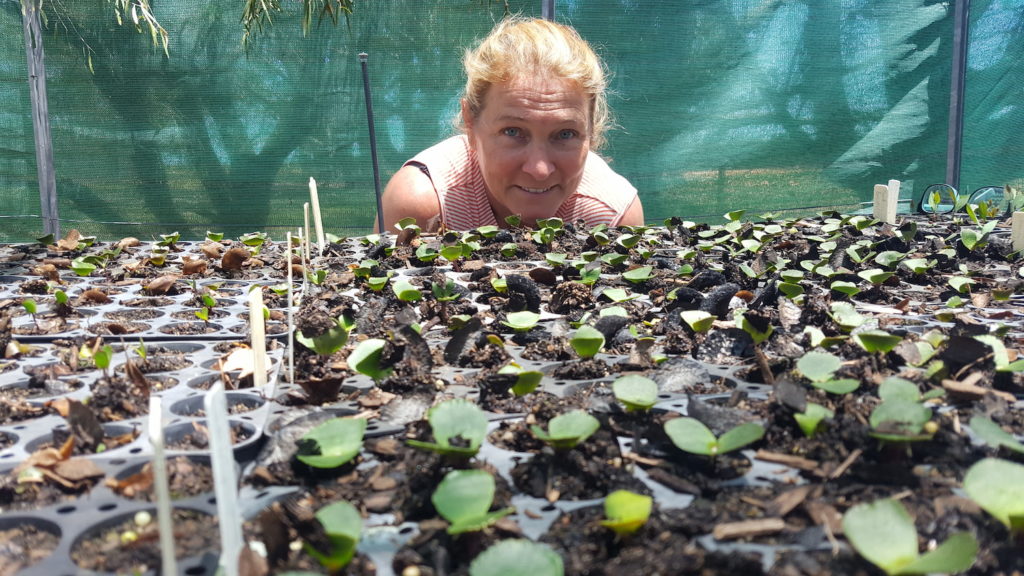
Through their revegetation and wildlife corridor plantings, Sylvia and Peter are actively expanding the amount of bushland on Wilyun Pools Farm. So far, with the help of family, friends, volunteers, consultants and fellow landcarers, they have revegetated 110 hectares and created about 18 kilometres of wildlife corridors. The corridors vary in width between 40 – 70 metres, creating habitat in which wildlife can shelter, feed, breed and move. They have also installed 75 kilometres of protective fencing.
“There is one particular place on the farm we’re really quite excited about. My parents cleared this area of native bushland about 48 years ago, then sowed it to pasture and grazed it with sheep for 22 years. Then in the last 20 years they converted it across into blue gum plantations, which were harvested five years ago. Peter and I came in behind that harvesting and we have direct seeded a wildlife corridor that runs across the farm, sitting on top of a sand dune,” Sylvia says.
“The deep sand sites in the Wellstead district are where a lot of the banksias and all the nectar rich plants in this landscape used to grow. So within this planting we’ve included lots and lots of the local banksias and hakeas. We’re just hoping that over time the wildlife, which comes from the bushland down near the creek, will use this vegetation corridor to move across the farm and set up other homes in some bush down on the back boundary.
“We’re already seeing it. The plants are only five years old and you can come in here and you’ll find birds nesting. You can even watch little birds fly from the shrubs in the revegetated corridor into the paddock, grab some flies and dart back into the corridor. We’ve always known that you can bring different components of nature back into your farming system and they’re going to do so many positive things— helping with insect control and keeping your landscape healthy. Unfortunately, nobody has measured it, quantified it, and put an economic value on it.
“The revegetated corridors also bring amazing aesthetics and pleasure. When we’re out there doing sheep work or fencing or driving tractors, which at times isn’t much fun, we’ve always got these rehabilitated sites to come and look at and enjoy—just sitting there for five minutes makes us feel so much better.
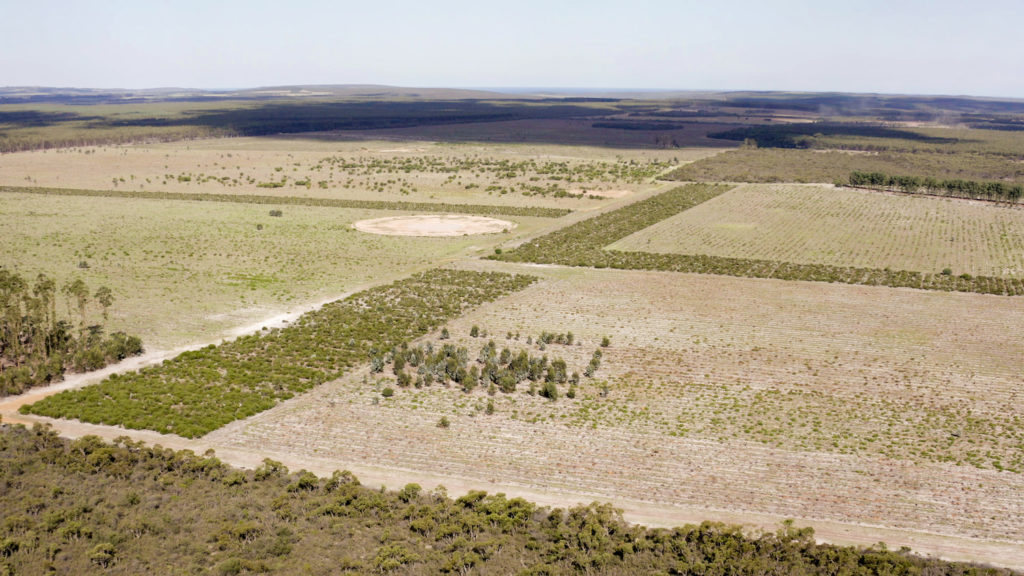
“Nearly all the native seed for our revegetation has come from the farm. Over the summer months we can’t get down to the beach for many swims because we’re collecting native seed. Some plants, like the wattles, we have to be right there on the specific day to collect the seed, or the pods will pop and scatter the seed over the ground. We have to be patient and keep an eye on all the native plants, and make sure we’re here on the day the seed matures. If we miss it, we have to wait another 12 months. Once the seed is collected, we spend quite a while getting that seed out of the pods or nuts, and then add it to our seed mix. Then, six months after it’s sown, we see this incredible transformation in the landscape—we’re just so excited about it.
“We survey the fauna in the corridors to see which animals return over time. The birds are the first group back and they use the plants for protection even when the plants are only knee high, at about 6 months in age. Then the insects start to increase followed by reptiles and frogs. The small mammals like honey possums and pygmy possums return after four to five years when the bushes are over two metres in height and dripping with nectar.”
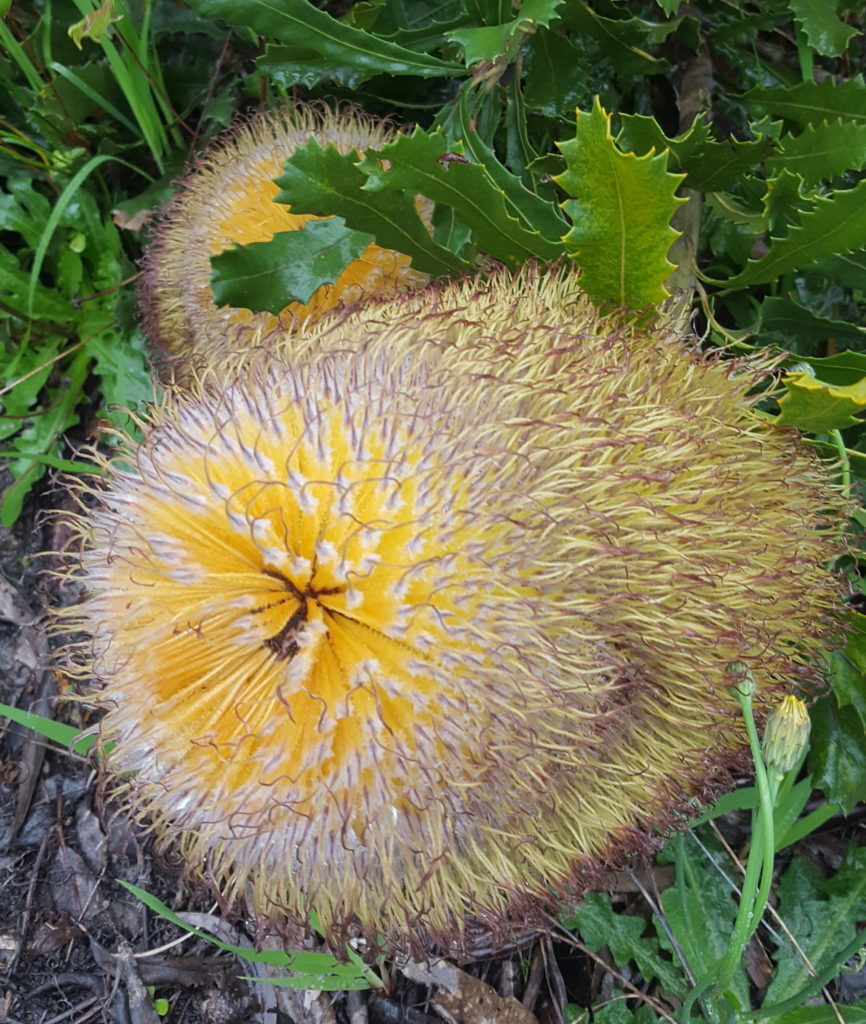
Sylvia and Peter have welcomed the traditional custodians of this country back to the farm and arranged visits to a range of special places on other farms across the district. They now work together with these Noongar Elders as they bring Wilyun Pools Farm back to health.
“In one of the areas of bush down near some permanent freshwater pools, there was always an unexplained, large, cleared area. The bush was fenced off from stock so had never been disturbed. It was an incredible experience to invite the Menang Elders to visit this site. Initially they sat there, they ‘felt the site’, and then recognised it as a traditional gathering site,” Sylvia says.
“It was really great to get a heritage story for this place. It was also amazing to have the Noongar Elders back here ‘on country’. Since farmers arrived here in the region, during the 1940s through to the 1960s, all the boundary fences were put up around the properties and the Noongar people were shut out. The government never told my family and other farming settlers that the land we had arrived on had actually belonged to people before us. It wasn’t until I worked up in Kakadu National Park and made many friends with the Traditional Custodians up there, that I started to wonder ‘who are the Traditional Custodians for down on the south coast of WA?’ I feel quite ashamed about that. It was probably in about 1985—it took me that long to start thinking about the peoples who had lived in this land before we came along. And so we’ve been getting more information. It’s just like it was the missing piece of the puzzle—a very important piece of this complex puzzle.”
Wilyun Pools Farm sits in a landscape where higher rainfall species like Marri and River Yate (Eucalyptus cornuta) are at the extreme eastern boundary of their range. There are also low rainfall, wheatbelt species around the farm which are sitting at the southern end of their range. Sylvia’s botanical knowledge is helping her to observe the resilience of the local ecosystem and think through what might happen to species like these in the face of climate change.
“So if we go into climate change, and they are predicting that this part of the landscape will get drier, it’s possible that species which require less rainfall will start to dominate and species like the Marri and River Yate, which need higher rainfall, may disappear out of this landscape. It’s sad but this landscape has seen climate change in the past, and these plants have moved with change,” Sylvia says.
“I think we always underestimate how powerful nature is. When we revegetate a site it’s incredible—give nature a little bit of a chance, and it grabs hold of it and comes back with such strength and power, it always leaves me in awe.
“Again, sometimes when we’re hearing about what’s happening worldwide to do with the environment, I still go by the strength of nature here and think we are possibly living in one of the most adapted landscapes in the world for climate change. I think some of these plants, especially eucalypts, are opportunists. They’re like gamblers—they wait for their chance, and if they get rainfall and sunlight conditions that are right for flowering, they’ll do it.
“We always used to think that plants needed to flower at specific times of the year because they have very specific pollinators that are only available at that time of the year. But I’m watching this bush and I’m seeing there are lots of pollinators in this landscape.
“I feel lucky we’re in a landscape which, if you just give it a bit of space, it can bounce back into good health and have such vigour. I find that really exciting—that it’s so strong. It’s an ancient, ancient landscape. It’s been through so much over the millions of years it’s existed here. And it’s really clever.
“And it’s taken years, decades to start seeing how intricate and amazing and complex this landscape is— it’s the complexity which makes it really exciting. There are so many unknown components to the way this landscape functions with its natural ecosystems. And in my lifetime we’re not even going to get anywhere near fully understanding that functioning. The mystery of it makes it exciting.”
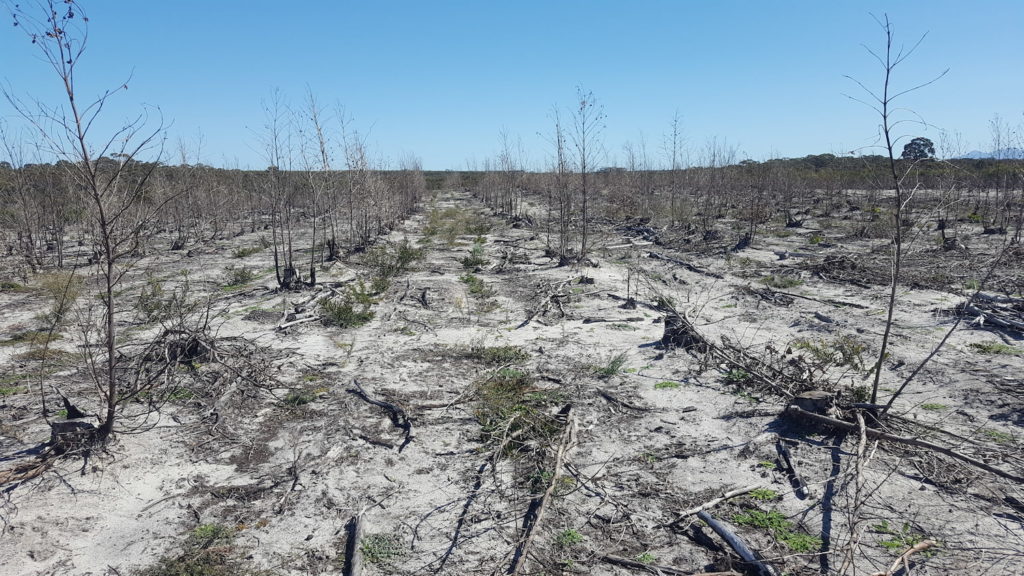

Sylvia recognises how important it has been to come back to the farm with new ideas and new information and to farm it in different ways – not by fighting nature but by listening more intently to the messages from nature.
“The great advantage Peter and I have is that we both come from farming backgrounds. We’ve gone away, done lots of things and learnt new skills which we have brought back into this project. But we are business people as well. You can sink thousands and thousands of dollars into a farm, fixing it up and redesigning it, but you’ve got to have cash flow; you’ve got to make money. You’ve got to pay your rates every year and be able to pay for the upkeep of the farm. The revegetated sites themselves have long-term management costs like weed and feral animal control. So you’ve got to have some profit,” Sylvia says.
“So we’ve gone back into something we’re both really familiar with, which is sheep. Peter was a farmer and shearer for many years. He enjoys livestock husbandry and likes having a healthy, happy flock.
“We’re using a rotational-grazing farming system. It is a little bit more intensive but we like growing the pastures so they are strong and healthy. We’re not pushing for maximum production with the mindset of getting as much money as we can as quickly as possible, then leaving. We’re here for the long term; we have a very long-term vision. We’re here to build up the health of this landscape, understand its functioning, and when we leave, hopefully we’ve balanced the farm so the landscape isn’t degrading anymore. Our hope is that future generations can come through with all their clever ideas and their science and take it onwards into a really healthy food production system, fully integrated with nature and cultural heritage.”
THANKS to Sylvia Leighton and Peter McKenzie. Our thanks also to Frank Rijavec and Margaret Robertson for the original recording of Sylvia. Editing by Margaret Robertson, Nicole Hodgson and Keith Bradby. This story was also published in the February 2022 edition of the Southerly Magazine.
